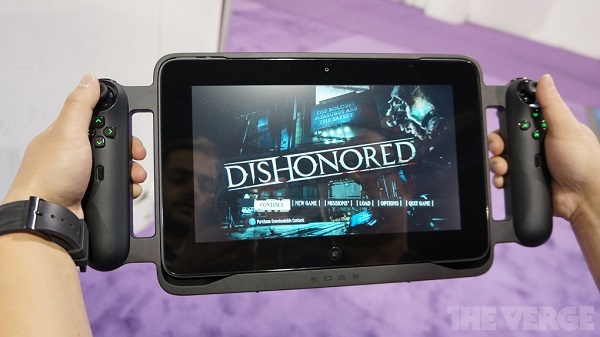Various manufacturers lifted the veil off a plethora of tablets this year at CES, some built with small budgets in mind, others with extreme performance or sheer innovation, but not all worthy of your attention. Here is the best of the crop.
Lenovo ThinkPad Helix Ultrabook/Tablet Hybrid
Sure, you’ve heard about ultrabook/tablet hybrids before, but Lenovo ThinkPad Helix comes with a twist. How, you may ask? Well, it employs a system called “Rip and Flip” that allows users to connect the device to the keyboard dock either with the display towards the keyboard, or the other way around, in “Stand Mode”. Moreover, if you fold it down, it enters “Tablet Plus” mode, which gives it an extended battery life.
Packing an i5 or i7 ULV CPU under the hood, with up to 8GB of RAM, a 256GB SSD and built-in 4G LTE connectivity, all along a 11.6-inch 1080p touchscreen IPS display and Windows 8, this hybrid gives a good account of itself even when running the most power-hungry programs out there. Best of all, its CPU overclocks when docking it with the screen towards the keyboard, and the fans found in the hinge help it cool down adequately.
Panasonic’s 20-inch 4K Windows 8 Tablet for Photographers and Architects
Where do I even begin? The 4K resolution hasn’t even become mainstream on TV sets, and Panasonic is already launching a 20-inch tablet with this feature among its major strong points. If you want to watch the presentation given by Richard Lee, CEO and President at Bluebeam Software, grab yourself some popcorn, as it lasts over 16 minutes. According to Daily Finance, Panasonic teamed up with Bluebeam Software to create a cutting-edge app for architects. Can you guess which tablet that app will run on?
The ones who had the chance to do a hands-on review of Panasonic’s 4K Windows 8 stated that the performance is not that great. The device is dropping frames a lot, and it gets particularly slow when handling some of the tiniest details in Windows 8. Providing that its performance improves in time, such a tablet would work wonders for photographers and architects, who spend a lot of time editing and planning.
Vizio’s Tegra 4 10-inch Android Tablet
The dust hasn’t even settled well after nVidia’s Tegra 4 launch, and Vizio already announced a tablet based on this SoC. The following video includes a short presentation of Vizio’s 10-inch Tegra 4 Android tablet, as well as of a smaller, 7-inch tablet oriented towards the budget market.
Both these tablets manufactured by Vizio are seen as Nexus 7 killers. Personally, I’m a bit skeptical about the second one and its capacity of dethroning Google’s tablet, but the Tegra 4-powered one certainly looks promising. Even though Vizio’s tablets do not come with IPS displays, the viewing angles are rather impressive. Also, given the performance that the Tegra 4 is capable of, the 10-incher should put a large grin on a lot of gamers’ faces, not to mention that it will come with Android 4.2 Jelly Bean, 32GB of storage and a 2,560-by-1,600 display resolution.
Vizio 11.6-inch Windows 8 Tablet Powered by AMD
This other tablet showcased by Vizio at CES 2013 features a 11.6 inch 1080p touchscreen display. What makes this one special is that it is the first AMD APU-powered tablet that runs Windows 8. It should be noted that Microsoft’s fully fledged OS was installed on the tablet, and not the RT version.
The manufacturer has not yet disclosed the price of the MTIIX-A1 tablet, as it is officially called, but it is expected to sell for around $800. In these conditions, it would be a much better choice than Microsoft’s own Surface.
Razer Edge Windows 8 Gaming Tablet
I saved the best for last, just to build up some suspense. Known in the past as project Fiona, Razer’s Windows 8 gaming tablet materialized at CES 2013 under a new name: Edge. This particular device has been called by some “the most dockable tablet,” and I can see why.

The dock that also acts like a controller with buttons on each side of the display turns the gaming experience on this device into something to die for (in a game, preferably!). Razer also promotes the Edge as the world’s first tablet designed for PC gamers. Since it runs Windows 8, that statement makes perfect sense.
Linus Sebastian, who was present at CES, ran people quickly through the specs of this amazing product. The Edge is said to come in various configurations, starting at $999 for a Core i5, 8GB of DDR3 RAM and a 64GB SSD. Fortunately, all of the models come with nVidia’s GT 640M. The $1,449 priced model packs an i7 CPU and 256GB of storage, while the $1,299 one combines an i7 with a 128GB SSD. Razer also prepared a lot of accessories for the Edge. Even though this come at a price (which is not small, mind you!), they improve the experience even more, by allowing gamers to immerse even more into the virtual worlds.
If you liked this post, please check the Toshiba Tegra 2 Android tablet and the Motorola Xoom tablet, both launched at CES 2011.










